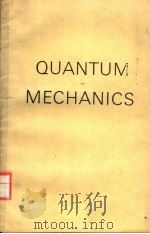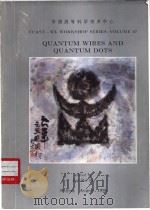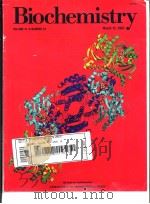《quantum biochemistry P867》
| 作者 | 编者 |
|---|---|
| 出版 | 未查询到或未知 |
| 参考页数 | |
| 出版时间 | 没有确切时间的资料 目录预览 |
| ISBN号 | 无 — 求助条款 |
| PDF编号 | 820561958(仅供预览,未存储实际文件) |
| 求助格式 | 扫描PDF(若分多册发行,每次仅能受理1册) |

Part ⅠMOLECULAR ORBITALS FOR BIOCHEMISTS1
Ⅰ.Why molecular orbitals?3
Ⅱ.Fundamental concepts9
Ⅰ.The wave-mechanical description of an electron9
1.The wave function10
2.The wave equation11
3.The spin14
4.One electron in the field of a single nucleus:the hydrogen atom and the notion of atomic orbitals15
A.General considerations15
B.The ground state:the descriptions of an atomic orbital17
C.Excited states:s,p,d,...orbitals19
D.The generalized notion of atomic orbitals21
5.One electron in the field of two nuclei:the notion of molecular orbitals22
A.General considerations22
B.σ orbitals24
C.π orbitals25
Ⅱ.The representation of polyelectronic systems26
1.The principles of the quantum mechanics of systems of particles26
2.The"individual orbital approach"to the polyelectronic problem;the"autbau"principle27
3.The variation method31
A.The principle31
B.An example31
Ⅲ.Atomic orbitals34
1.The structure of polyelectronic atoms34
2.The valence shell:valence electrons and lone pairs37
3.Valence states and hybridization38
4.Electronegativity41
Ⅳ.The LCAO approximation for molecular orbitals43
1.The basic principle43
2.The variation method in the case of a linear trial function45
3.LCAO molecular orbitals for diatomics48
A.LCAO approximations for the monoelectronic case48
B.The representation of diatomic molecules53
4.Polyatomic molecules56
A.Localized and non-localized (delocalized) bonds56
B.The structure of fundamental carbon compounds60
Ⅲ.Conjugated molecules62
Ⅰ.Delocalized π electrons and polycentric molecular orbitals62
Ⅱ.The principle of the LCAO approximation for conjugated systems64
Ⅲ.The Hückel approximation for hydrocarbons67
1.The assumptions67
2.Writing and solving the secular equations68
A.Examples and notations68
B.The use of the molecular symmetry70
3.The energy values and the energy indices79
4.The structural indices80
Ⅳ.Refinements of the Hückel approximation85
Ⅴ.Substituted and heterocyclic molecules91
1.The general scheme91
2.The different types of substituents and heteroatoms92
3.The choice of parameters98
A.General considerations98
B.Numerical values104
4.Examples of calculations110
5.Energy indices and structural indices115
Ⅳ.The principal applications of the indices of the electronic structure118
Ⅰ.Resonance energy118
1.Keto-enol tautomerism121
2.Oxidation-reduction potentials of reversible systems123
3.Formation and stability of free radicals123
4.Acidic and basic strength124
5.Product stabilities in chemical transformations125
Ⅱ.Energies of the highest filled and lowest empty molecular orbitals128
1.Electron-donor properties128
2.Electron-acceptor properties132
3.Charge-transfer complexes135
Ⅲ.Transition (excitation) energies138
Ⅳ.Diamagnetic anisotropy145
Ⅴ.Electronic charges147
Ⅵ.Bond orders148
Ⅶ.Chemical reactivity155
1.The isolated-molecule approximation155
2.The reacting-molecule approximation160
3.The relation between the two approximations169
Ⅷ.Supplementary applications of the index of free valence171
Ⅸ.The scope of the molecular-orbital approach to biochemistry178
Ⅹ.General references for Part Ⅰ181
Part ⅡELECTRONIC STRUCTURE OF FUNDAMENTAL BIOCHEMICAL SUBSTANCES183
Ⅴ.Purines,pyrimidines and the submolecular structure of nucleic acis185
Ⅰ.The molecular structure of the nucleic acids185
Ⅱ.The biochemical role of the nucleic acids195
Ⅲ.Related biologically important purines and pyrimidines198
1.Metabolically important purines and pyrimidines198
A.Purines198
B.Pyrimidines202
2.Isomers204
Ⅳ.Tautomerism in purines and pyrimidines205
Ⅴ.The significance of the resonance energy209
Ⅵ.Electron-donor and electron-acceptor properties215
Ⅶ.Local structural properties224
Ⅷ.The properties of the carbon atoms226
Ⅸ.The properties of the ring nitrogen atoms230
1.The pyridine-type nitrogens230
2.The N9 nitrogen of purines and the N1 nitrogen of pyrimidines238
Ⅹ.The antitumor activity of purine antimetabolites240
Ⅺ.The reactions concerning the amino groups of the purines and pyrimidines248
Ⅻ.Formation of metal complexes253
ⅩⅢ.Mechanism of the metabolic degradation of purines by xanthine oxidase258
ⅩⅣ.Structural aspects of radiation effects267
1.General aspects267
2.The experimental data270
3.The interpretation277
ⅩⅤ.Miscellaneous reactions283
ⅩⅥ.A general view287
Ⅵ.Proteins as conjugated systems292
Ⅰ.The molecular structure of proteins292
Ⅱ.The biochemical role of proteins300
Ⅲ.The existence of energy bands and the semiconductivity of proteins301
1.The hypothesis301
2.Conductors and insulators303
3.Semiconductivity of proteins306
4.Quantum-mechanical calculations on the electronic states of proteins308
5.The peptide free radical318
Ⅳ.Some electronic properties of the aromatic amino acid residues of proteins320
1.Generalities320
2.Electron-donor properties of tryptophan322
3.Metabolism of tryptophan326
4.Remarks on the remaining aromatic amino acids331
Ⅶ.Energy-rich compounds335
Ⅰ.Elementary concepts of bioenergetics335
1.Free energy change335
2.Free energy of activation337
3.Some properties of ?F339
4.The coupling of reactions340
Ⅱ.The main types of energy-rich substances348
1.Energy-rich phosphates348
A.Major types348
B.The theory of energy wealth354
(1)The qualitative theory354
(2) The calculations356
(3) Factors contributing to the energy wealth of phosphates357
C.Phosphates as electrophilic reactants370
D.The structure of ATP374
2.Other types of energy-rich compounds376
A.Acyl thioesters376
B.Acetyl-imidazole381
C.Onium compounds383
Ⅷ.Pteridines385
Ⅰ.General role385
Ⅱ.The metabolism of riboflavin and of folic acid386
1.The synthesis and degradation of riboflavin386
2.The synthesis and degradation of folic acid389
Ⅲ.Electronic properties391
1.Isomerism and tautomerism391
2.The significance of resonance energy393
3.Electron-donor and -acceptor properties396
4.The reactivity of the carbon atoms397
5.Properties of the nitrogen atoms400
A.Pyrimidine-type nitrogens400
B.Pyrrole-type nitrogens400
6.Enzymic oxidation by xanthine oxidase403
Ⅸ.Porphyrins and bile pigments406
Ⅰ.Porphyrins406
1.General view406
2.Electronic structure of metal-free porphyrins408
3.General characteristics of the iron-porphyrin complexes416
4.Molecular-orbital calculations on the iron-porphyrin complexes419
A.Building of the molecular orbitals of the complex420
B.Distribution of energy levels422
C.Distribution of the electronic charges424
Ⅱ.Bile pigments427
Ⅹ.Conjugated biochemical polyenes435
Ⅰ.Carotenoids and vitamins A435
1.General aspects435
2.The in vivo transformation of carotenoids into vitamin A440
A.Vitamin A441
B.The mechanism of the transformation of carotenoids into vitamin A441
C.Structure and provitamin A activity453
Ⅱ.Retinenes and the visual pigments457
1.The composition of the visual pigments457
2.The occurrence of the 11-cis isomer of retinene in the rhodopsin system460
3.The electronic structure of the different isomers of retinene466
Ⅺ.Quinones471
Ⅰ.General features471
1.Oxido-reductive properties of quinones472
A.Experimental data472
B.Correlation with theoretical indices475
2.Quinones in charge-transfer complexes479
3.Aspects of the chemical reactivity of quinones480
A.The electronic indices480
B.Characteristic reactivities483
Ⅱ.Particular quinones of outstanding biological importance486
1.Vitamin K486
A.Definition486
B.Blood-clotting activity487
C.Other possible roles of vitamin K490
2.Ubiquinone (Coenzyme Q) and related compounds491
3.Vitamin E492
A.General features492
B.The antioxidant activity of vitamin E and of other phenolic compounds494
Ⅲ.The band structure of melanins497
Part ⅢELECTRONIC ASPECTS OF ENZYMIC REACTIONS501
Ⅻ.General aspects of enzymic reactions503
ⅩⅢ.Oxidation-reduction enzymes508
Ⅰ.The electron-transport chain508
Ⅱ.The electron-donor and electron-acceptor properties of the respiratory coenzymes517
Ⅲ.The mechanism of functioning of the pyridinoproteins519
1.The principal reactions519
2.The chemical aspects520
3.The electronic interpretation525
Ⅳ.The mechanism of functioning of the flavoprotains533
1.The principal reactions533
2.The chemical aspects534
3.The electronic aspects541
Ⅴ.Molecular orbitals and oxidation-reduction potentials545
Ⅵ.The oxido-reductive properties of organic dyes of biochemical importance549
Ⅶ.The cytochromes552
Ⅷ.Oxidative phosphorylation555
ⅩⅣ.Folic acid coenzymes564
Ⅰ.General characteristics564
Ⅱ.The principal metabolic reactions catalyzed by folic acid coenzymes565
Ⅲ.The principal functions of folic acid coenzymes:A general view569
Ⅳ.Folic acid coenzymes as carriers of one-carbon units:The experimental data571
1.FH4 as one-carbon unit acceptor572
A.Reactions necessitating FH4 as the only cofactor572
B.Reactions necessitating,besides FH4,a complementary activator,K+ or ATP575
C.Chemical reactions of FH4 with C1 units in strong acid medium576
D.Conclusion577
2.FH4 as one-carbon unit donor577
Ⅴ.Folic acid coenzymes as carriers of one-carbon units:The electronic aspects579
1.General remarks on the molecular-orbital calculations on folic acid and its derivatives579
2.FH4 as one-carbon unit acceptor580
3.FH4 as one-carbon unit donor586
Ⅵ.Folic acid coenzymes as subtrates for the oxido-reduction of a one-carbon unit589
Ⅶ.The oxido-reductive transformations of folic acid and its coenzymes591
1.FH4 as a coenzyme for the reduction of one-carbon units591
2.The transformation F ? FH4593
3.The mechanism of the oxido-reductive transformations594
Ⅷ.Folic acid antimetabolites596
1.Types of antifolic agents598
2.Electronic structure and mode of action of antifolic agents601
ⅩⅤ.Pyridoxal phosphate enzymes609
Ⅰ.General aspects609
Ⅱ.An outline of the theory of Braunstein and Snell611
Ⅲ.The electronic interpretation615
1.General remarks on the quantum-mechanical calculations on pyridoxal phosphates615
2.The structure of the primary Schiff's base616
3.Reactions resulting from the labilization of the α-proton617
A.Transamination617
B.Racemization623
C.α-β eliminations624
D.γ-eliminations628
4.Reactions resulting from the labilization of the α-carboxy group631
5.Reactions resulting from the labilization of the R group of the amino acid633
6.Conclusion634
ⅩⅥ.Thiamine-pyrophosphate catalyzed reactions636
Ⅰ.The principal functions of thiamine-pyrophosphate enzymes636
Ⅱ.Theories of mode of action640
Ⅲ.The electronic aspects645
1.The calculations645
2.The results646
ⅩⅦ.Enzymic hydrolysis657
Ⅰ.General features of substrates for enzymic hydrolysis657
Ⅱ.Common features of the active sites of hydrolytic enzymes669
Ⅲ.Electronic structure and activity of organophosphorus inhibitors of esterases671
ⅩⅧ.Conclusion:electronic delocalization and the processes of life673
Appendix677
Index of Authors845
Index of Principal Compounds and Subjects861
《quantum biochemistry P867》由于是年代较久的资料都绝版了,几乎不可能购买到实物。如果大家为了学习确实需要,可向博主求助其电子版PDF文件。对合法合规的求助,我会当即受理并将下载地址发送给你。
高度相关资料
-
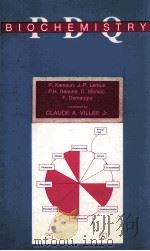
- BIOCHEMISTRY
- 1986 B. C. DECKER INC.
-
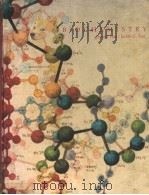
- BIOCHEMISTRY
- 1990年 JOHN WILEY & SONS
-

- Stochastic quantum mechanics and quantum spacetime
- 1984 D. Reidel Pub. Co. ; Distributed in the U.S.A. and Canada by Kluwer Academic Publishers
-

- ECOACCIDENTS
- 1985 PLENUM PRESS
-
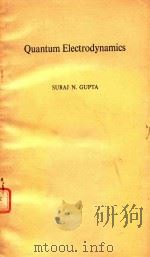
- QUANTUM ELECTRODYNAMICS
- 1977 GORDON AND BREACH SCIENCE PUBLISHERS
-
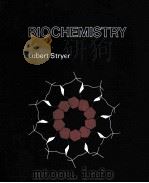
- Biochemistry /
- 1975 W. H. Freeman
-

- QUANTUM CHEMISTRY
- 1978 ACADEMIC PRESS
-
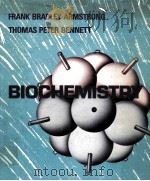
- BIOCHEMISTRY
- 1979 OXFORD UNIVERSITY PRESS
-
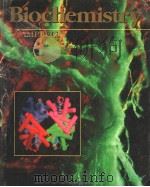
- BIOCHEMISTRY
- 1991 SAUNDERS COLLEGE PUBLISHING
-
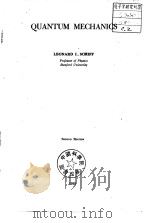
- QUANTUM MECHANICS
- 1986 WORLD SCIENTIFIC
-

- BIOCHEMISTRY
- 1965
-
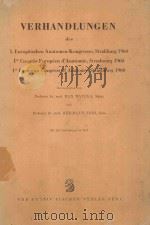
- VERHANDLUNGEN
- 1962 VEB GUSTAV FISCHER VERLAG JENA
提示:百度云已更名为百度网盘(百度盘),天翼云盘、微盘下载地址……暂未提供。➥ PDF文字可复制化或转WORD
